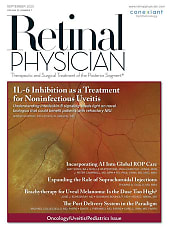
“Teamwork makes the dream work” has become a common mantra for teams from athletics and software development to medicine. Teamwork is critical for success in the ASC. A healthy culture creates a community of respect. Focusing on our common goals of preventing, treating, and curing blindness for patients necessitates that every team member has been well trained in their procedural roles and is committed to a culture of continuous improvement.
In the operating room, as in dance, the lights are dimmed, the spotlight is on the operating stage, and the surgical team must coordinate their performance for the most important person in the audience—the patient. A well-orchestrated performance ensures that each player knows their role and is observing the clues and cues that signal them to play their part. The coordination of movement ensures safety for both the surgical patient and the surgical team, as correct instruments exchange hands, providing for optimal technique and prevention of needlestick injuries.
Surgical checklists provide the list of required instruments and medications, and facilitate communication among the surgeons, nurses, and technicians. Rehearsals with the surgical team prior to performing new procedures or using new devices are additional ways to choreograph a smooth performance.
Another component that we can easily incorporate into our team is that of reducing operating room waste. A single cataract surgery in the United States creates 5 to 9 pounds (2.3 to 3.9 kg) of waste as compared with one-half pound (0.25 kg) for a single case of cataract surgery at Aravind Eye Hospital in India—and Aravind does not have an increased incidence of infection. Team training for reducing, recycling, and reusing materials and devices whenever possible promotes a healthy outlook on sustainability. Review your repertoire of instruments and supplies for each type of surgery. Decreasing disposables, using multiuse instruments and blades, and opening only those supplies that you are most likely to require can create meaningful impact as an aggregate.
In addition to our own surgical teams, we can work with our industry partners to decrease our carbon footprint. Each issue of The Ophthalmic ASC includes a column highlighting corporate responsibility, providing opportunities for industry to communicate their environmental initiatives. As many of you are hopefully familiar with by now, the collaborative group EyeSustain.org comprises industry leaders and over 20 ophthalmology societies including AAO, ASCRS, ESCRS, and APACRS working as a global team to share ideas for improving best practices and innovation in decreasing OR waste. As we continue to strive for a culture of continuous improvement to include sustainability, we maintain our shared goals of treating, curing, and preventing blindness and improve our performances as our surgery center teams dance into a more sustainable future. ■








